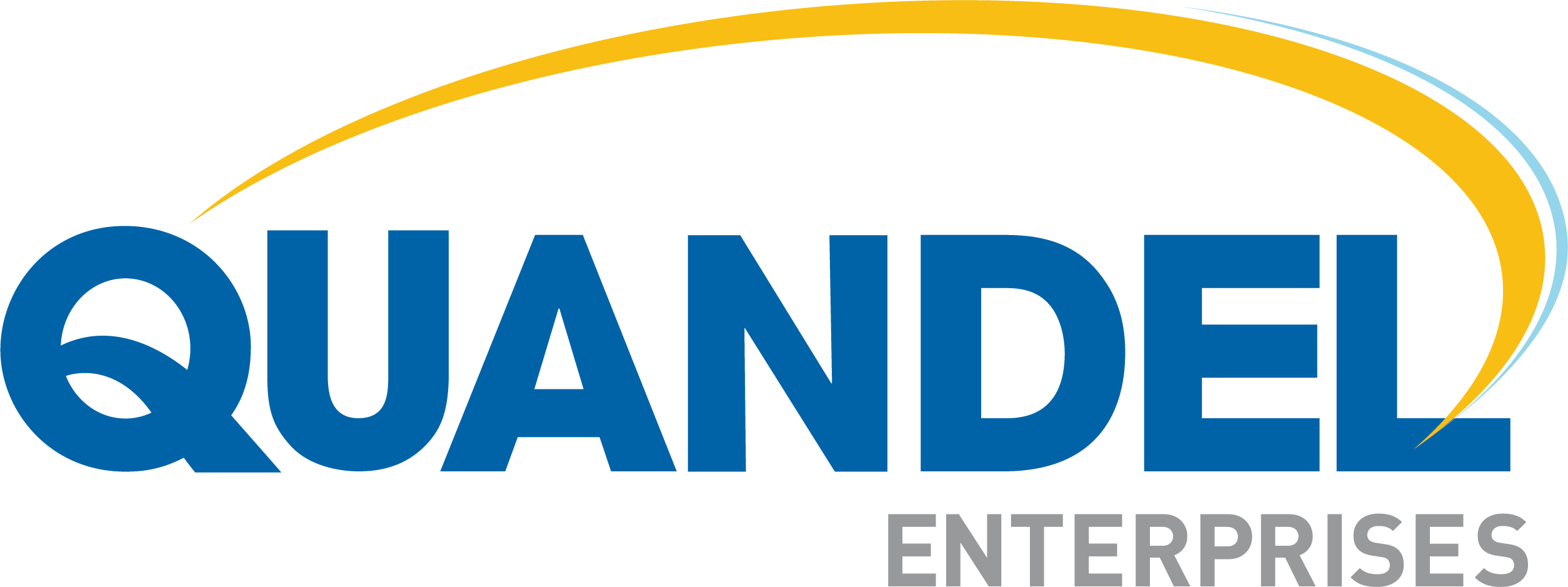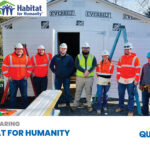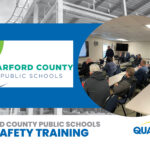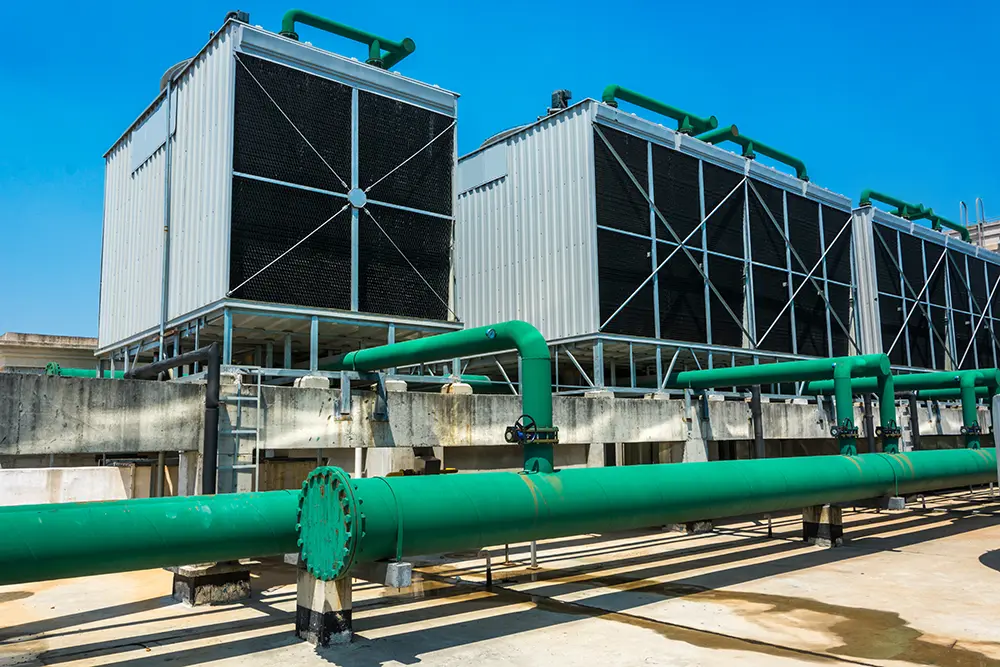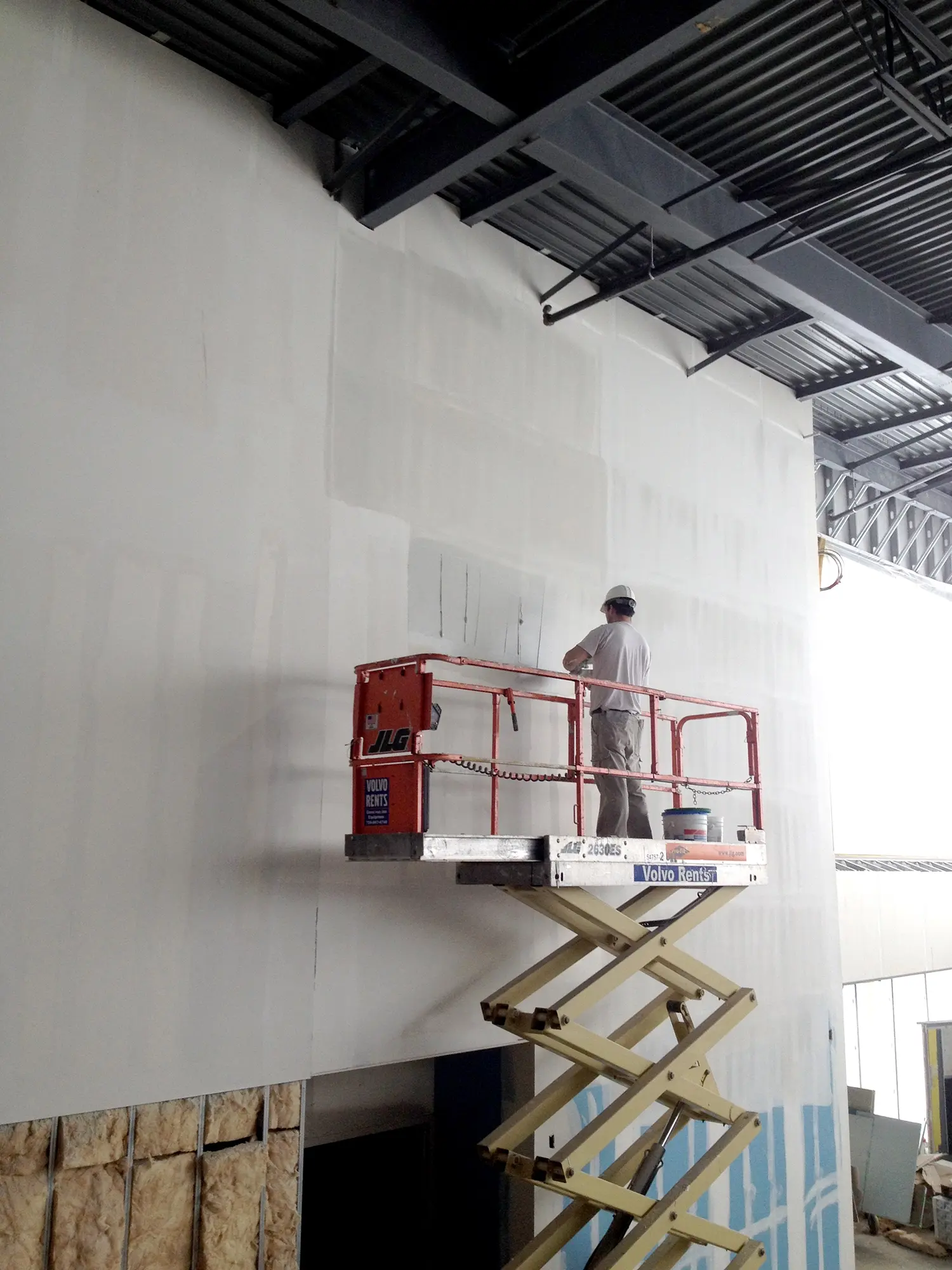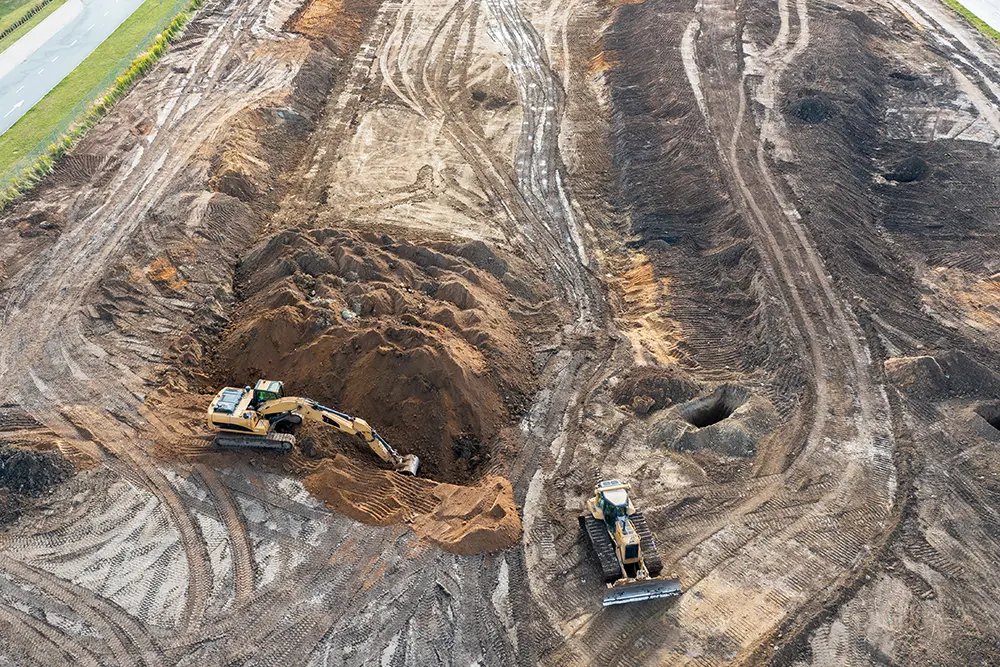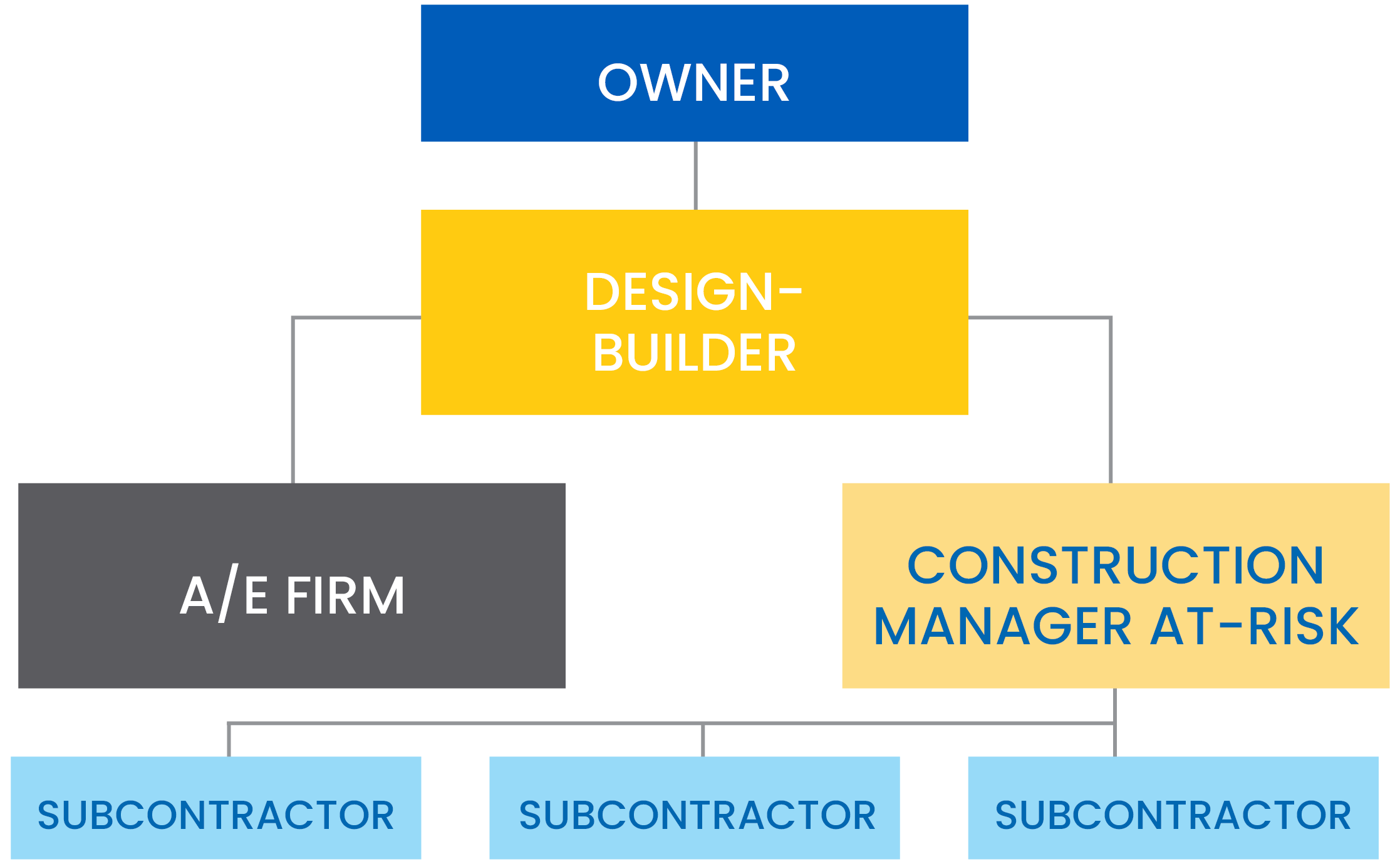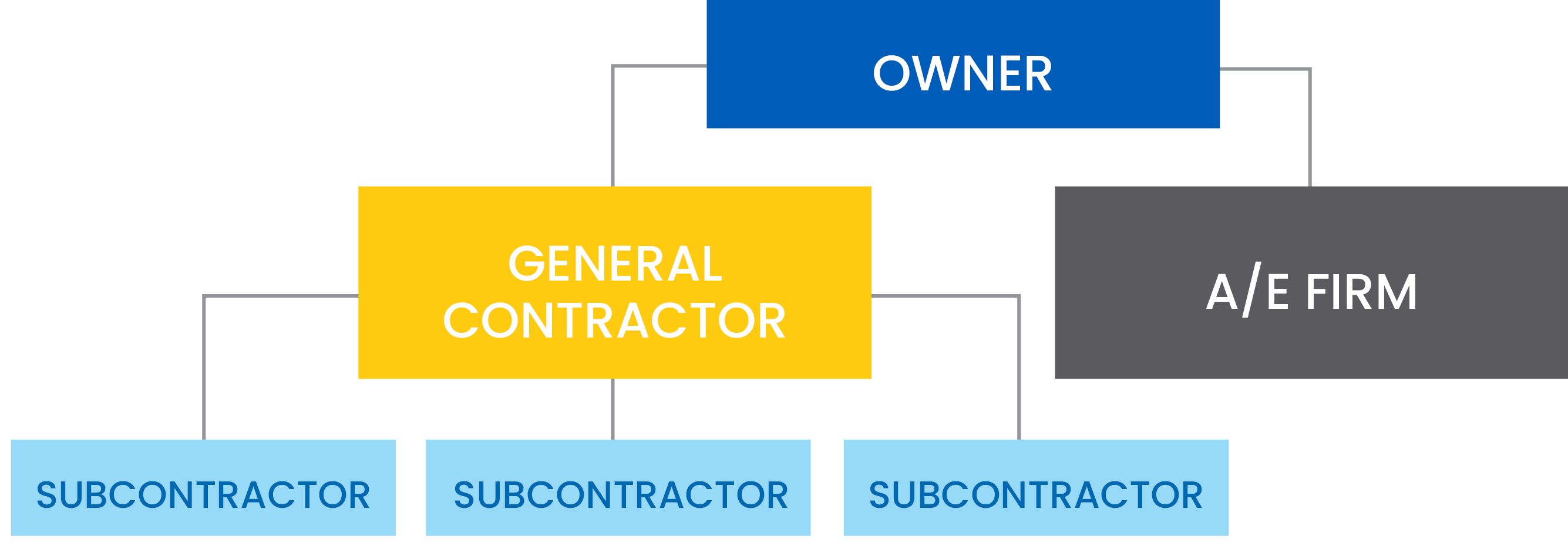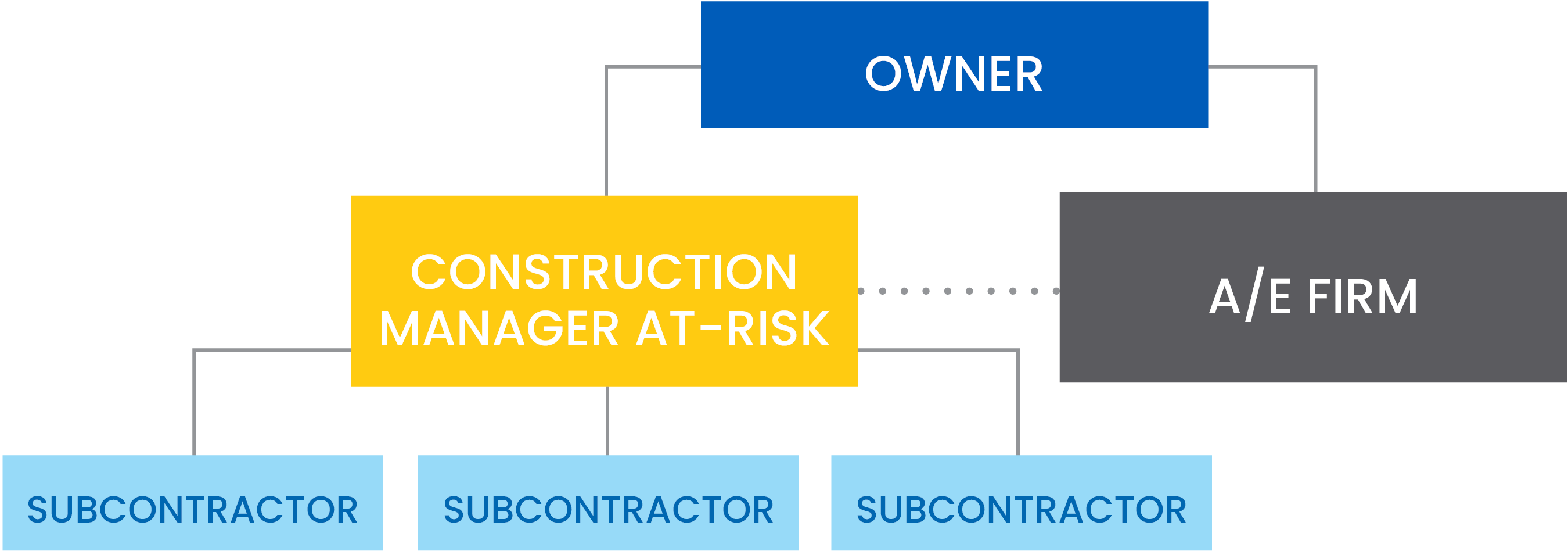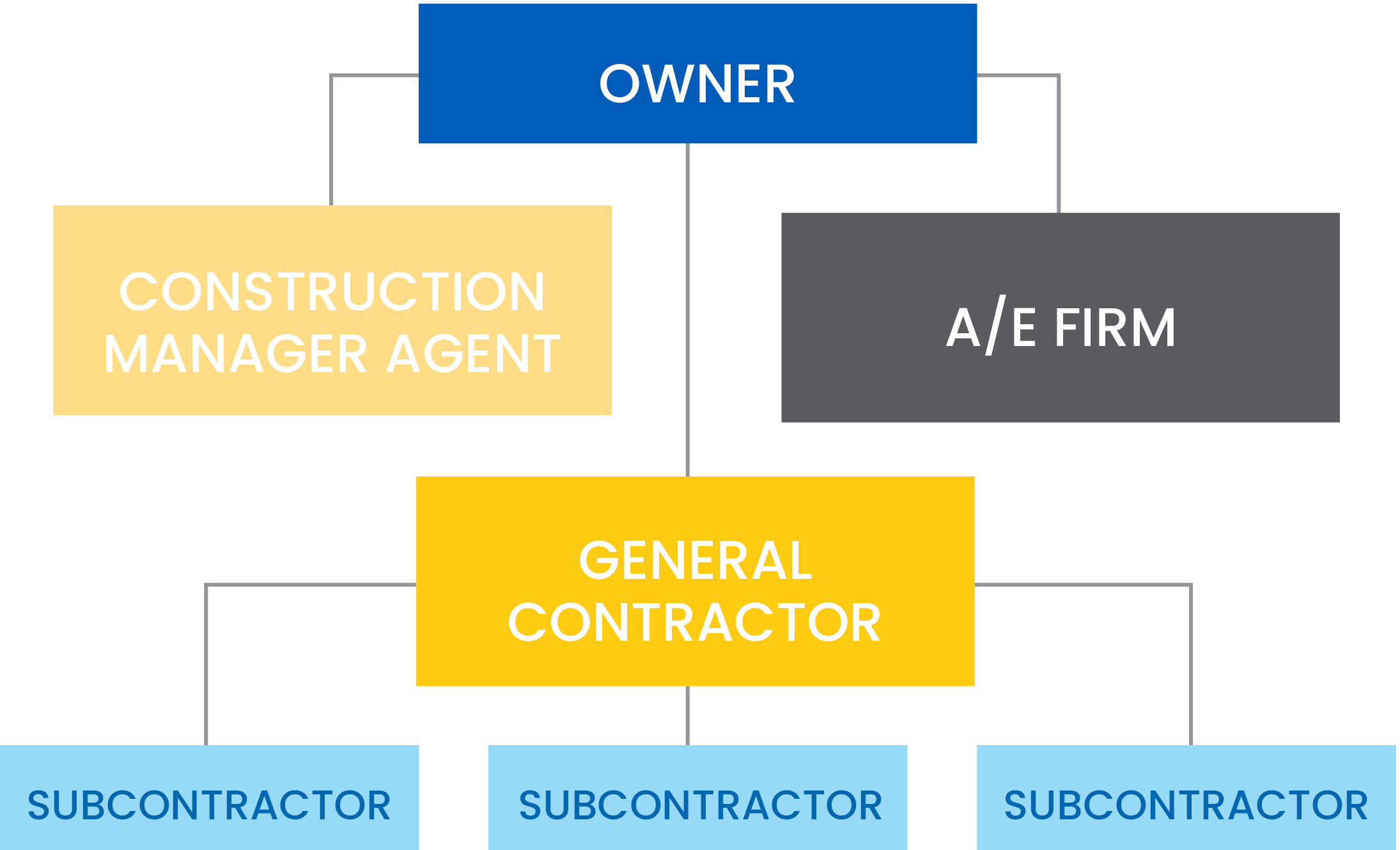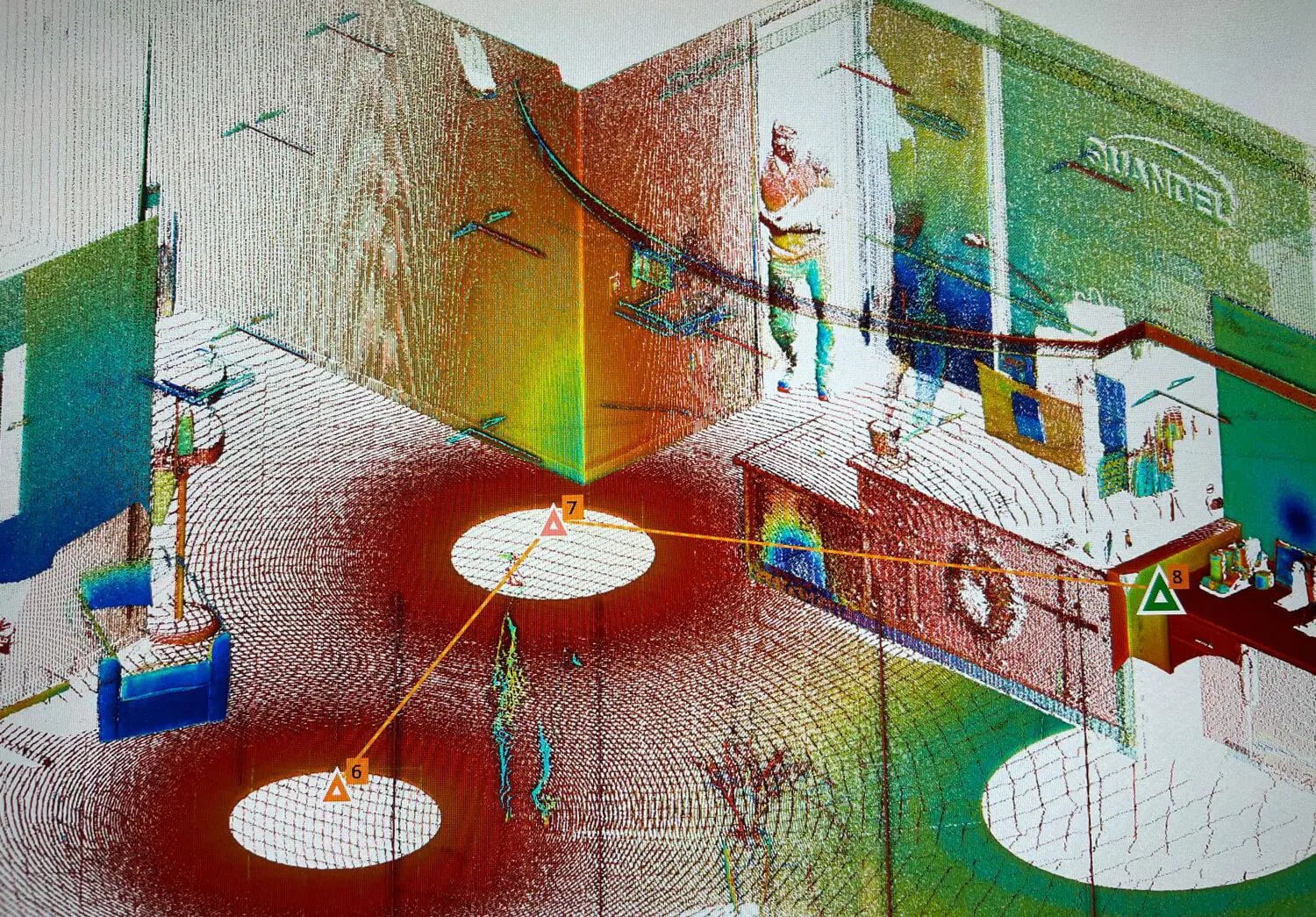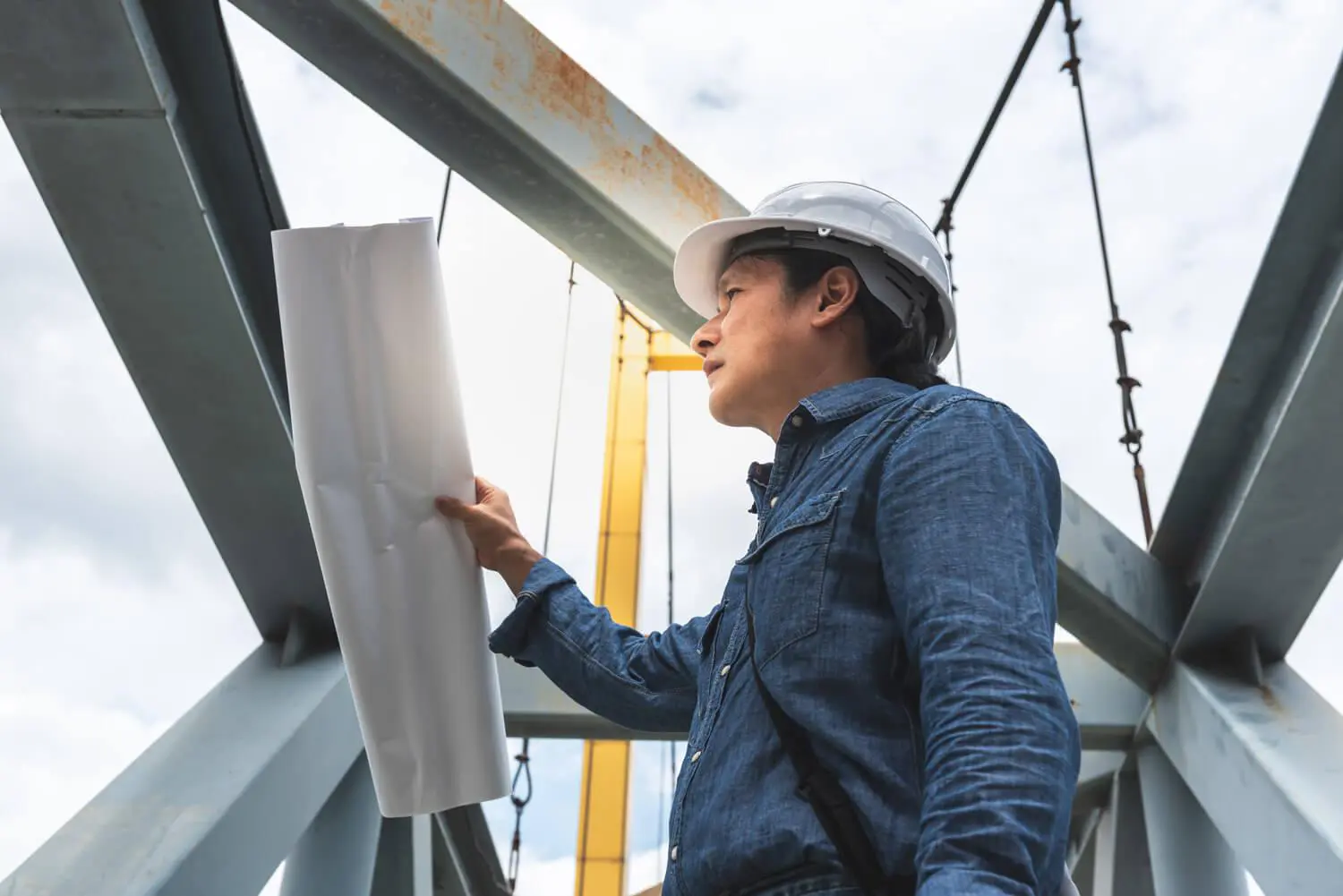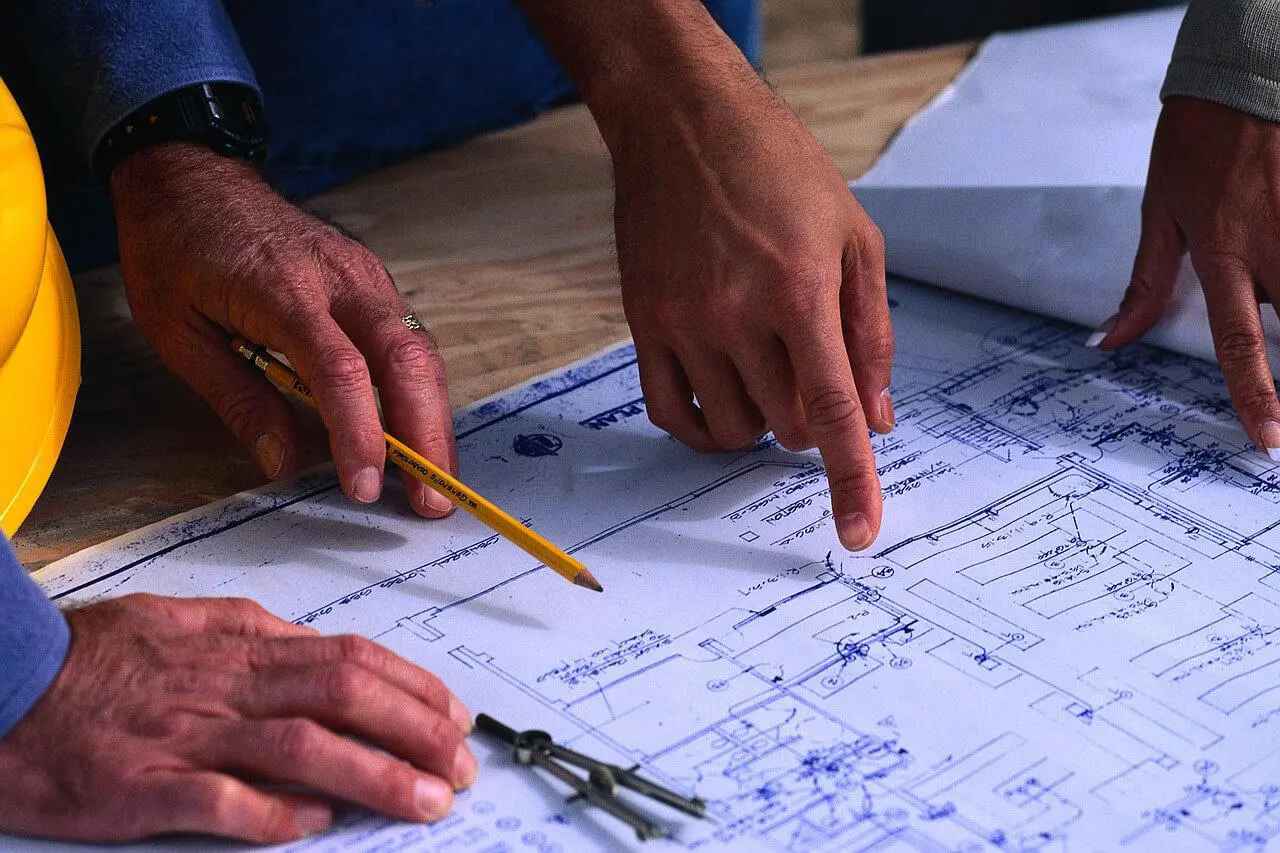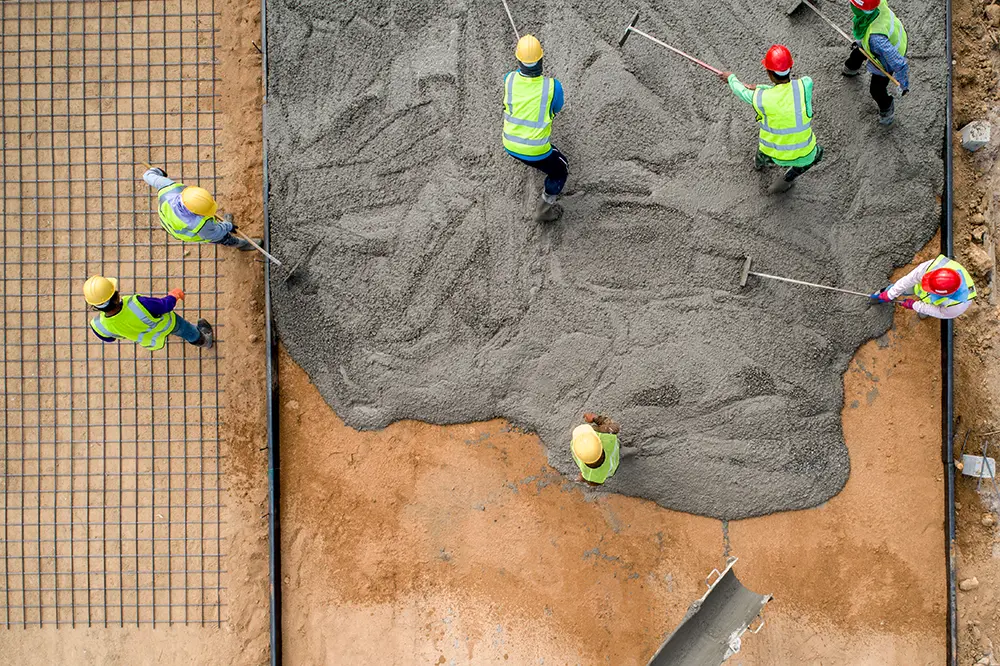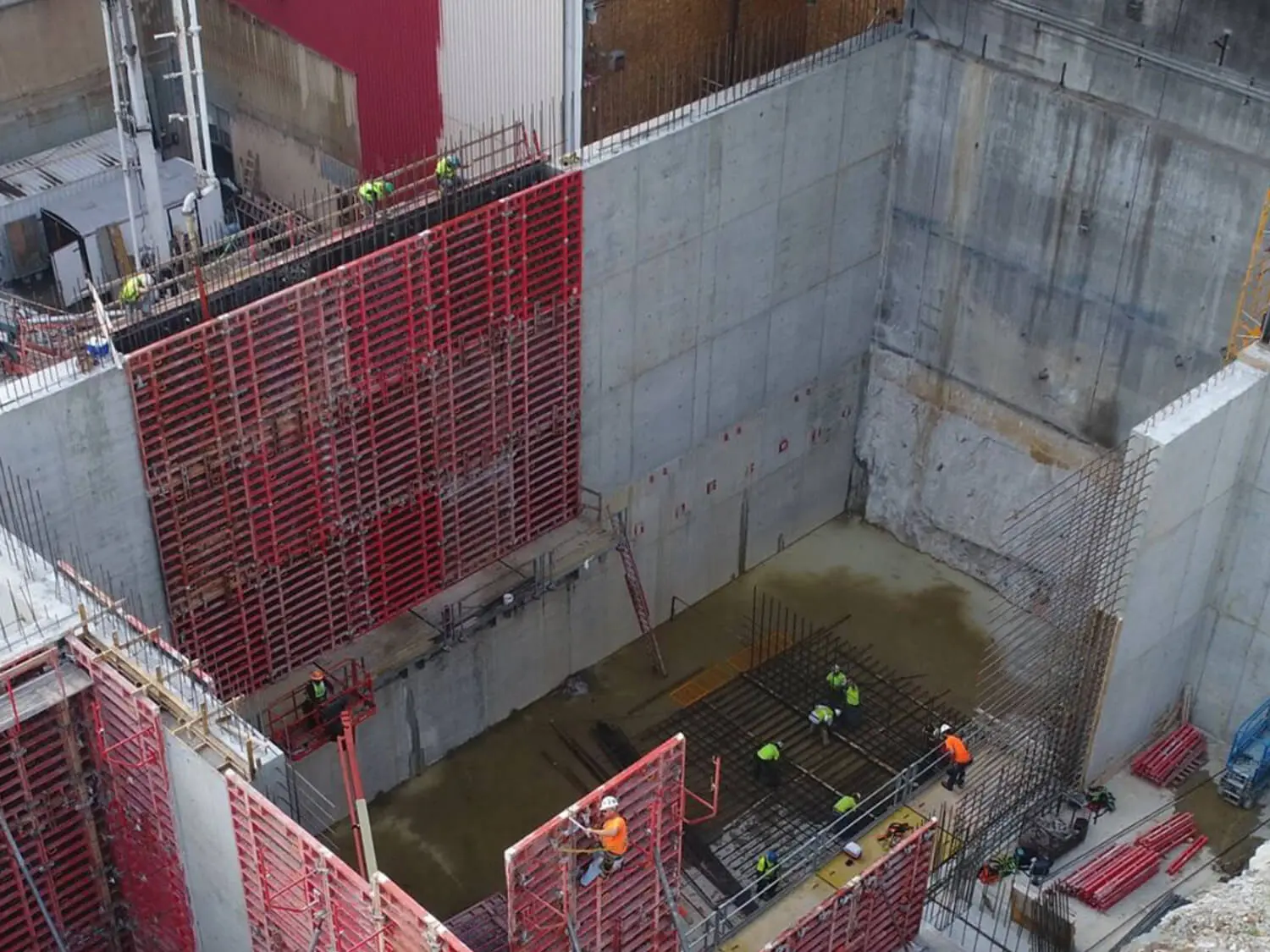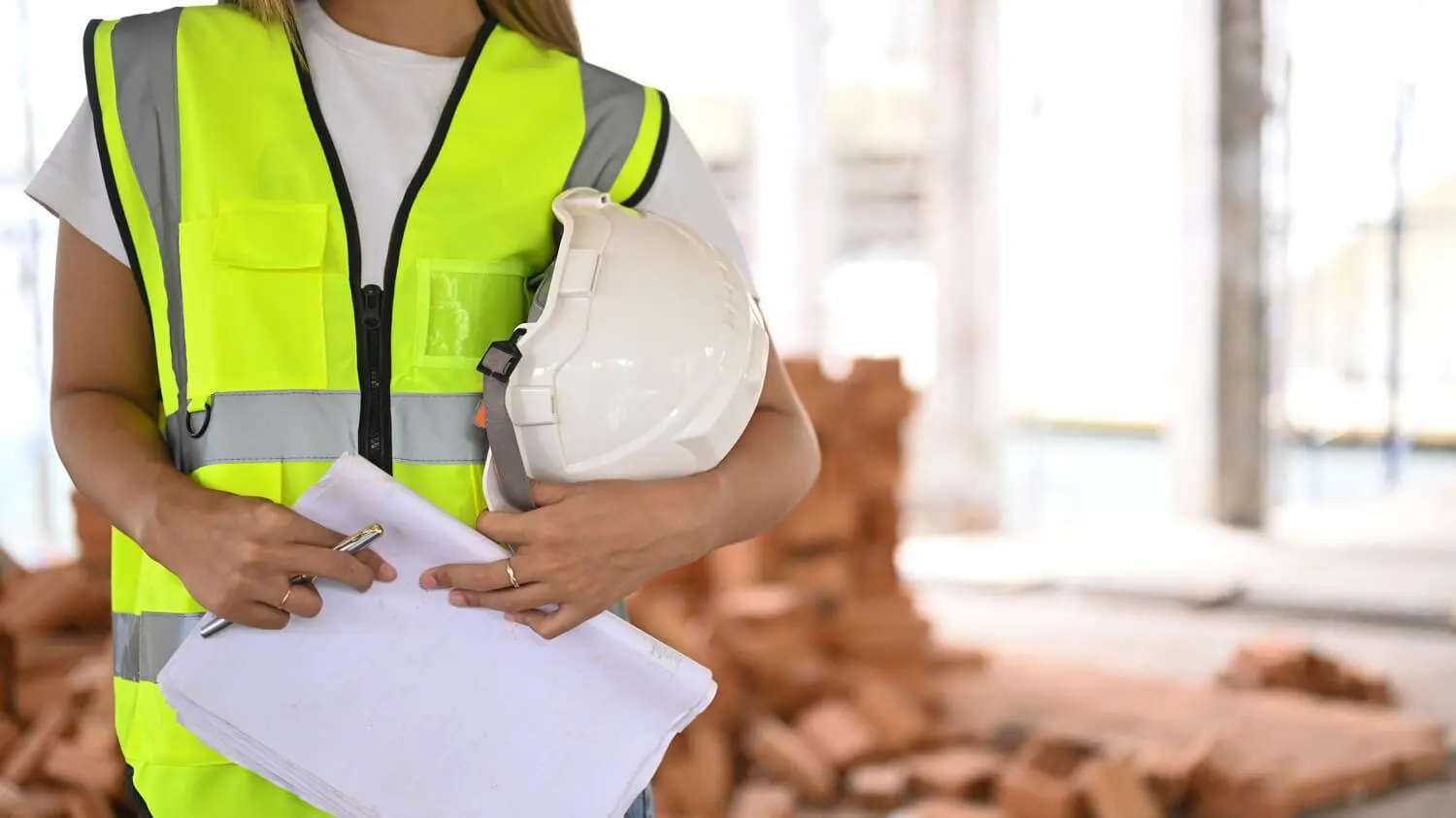OSHA Standard Subpart M – Fall Protection – 1926.501(b)(1) “Unprotected sides and edges.” Each employee on a walking/working surface (horizontal and vertical surface) with an unprotected side or edge which is 6 feet (1.8 m) or more above a lower level shall be protected from falling by the use of guardrail systems, safety net systems, or personal fall arrest systems.
OSHA Standard Subpart M – Fall Protection – 1926.501(b)(14) “Wall openings.” Each employee working on, at, above, or near wall openings (including those with chutes attached) where the outside bottom edge of the wall opening is 6 feet (1.8 m) or more above lower levels and the inside bottom edge of the wall opening is less than 39 inches (1.0 m) above the walking/working surface, shall be protected from falling by the use of a guardrail system, a safety net system, or a personal fall arrest system.
OSHA Standard Subpart M – Fall Protection – Guardrail systems shall be capable of withstanding, without failure, a force of at least 200 pounds (890 N) applied within 2 inches (5.1 cm) of the top edge, in any outward or downward direction, at any point along the top edge. 1926.502(b)(3)
OSHA Standard Subpart M – Fall Protection – The employer shall provide a training program for each employee who might be exposed to fall hazards. The program shall enable each employee to recognize the hazards of falling and shall train each employee in the procedures to be followed in order to minimize these hazards. 1926.503(a)(1)
Key Points: A Top Rail, CAZ – CDZ (controlled access zone – Controlled Decking Zone), or a Personal Fall Arrest System is required any time there is an opening more than 19 ½“ wide or with the bottom height opening less than 39”.
What You Need to Know! Wall, Roof Openings, and Chutes.
- Window, wall openings, and knee walls. All openings on any floor or roof that exposes an employee to a 6-foot fall or greater need a top rail 42 inches, give or take 3 inches, a warning line 16 feet back, or the utilization of a PFAS (Personal Fall Arrest System).
- Chutes are to follow the same guidelines as windows and wall openings. When removing debris from an elevation using a chute, a guard rail at a minimum of 39 inches is required, or the utilization of a PFAS.
- If a stud opening is wider than 19 ½ inches, a barricade, PFAS, or a CDZ established at 16 feet back is required.
- Knee walls on roofs are required to be a minimum of 39 inches high. Working any leading edge requires the utilization of a PFAS, warning line system, or a guard rail.
- All employees need to be trained concerning fall hazards. In the unfortunate event of an accident, not only will we be cited for a fall hazard, but we will also be cited for not training any exposed employee about that hazard.
- Skylights and roof openings, including open-roof access hatches, must provide the same protection, utilizing PFAS, warning line systems, or guard rails.
—. www.osha.gov/laws-regs/regulations/standardnumber/1926/1926.501.

